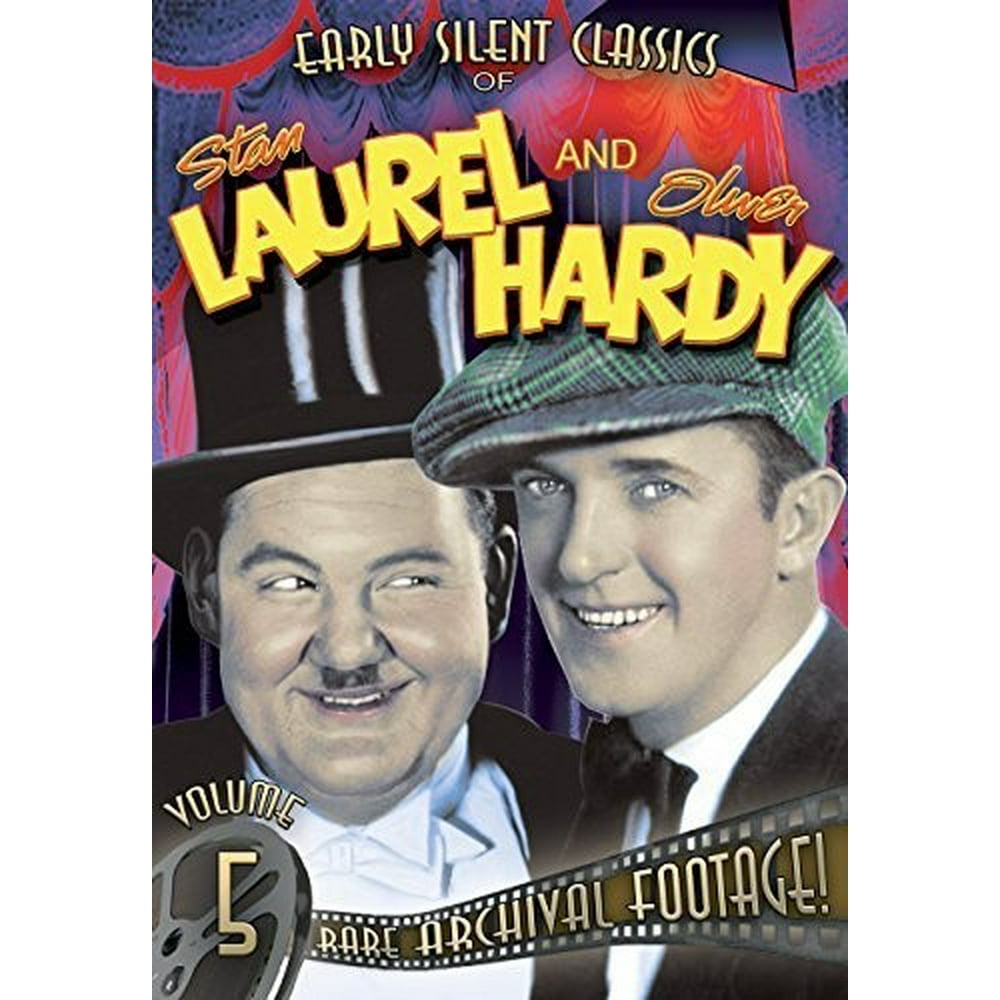The legal drinking age is the age at which a person can legally consume alcoholic beverages. In the United States, the drinking age varies from state to state, but the minimum age is 21 years old. This age limit was established in 1984 when Congress passed the National Minimum Drinking Age Act. The act required all states to raise their minimum drinking age to 21 or lose federal highway funding. Today, nearly all states have a minimum drinking age of 21.

The Debate over Legal Drinking Age
The debate over the legal drinking age has been ongoing for decades. Some argue that the age limit should be lowered to 18, as 18-year-olds are considered adults and can vote, serve in the military, and get married. Others argue that the age limit should be raised even higher to 25, as the brain is not fully developed until the mid-20s and alcohol can have serious long-term effects on brain development.

The Risks of Underage Drinking
Underage drinking is a serious issue and can have serious consequences. Studies have shown that underage drinkers are more likely to engage in risky behaviors such as driving under the influence, unprotected sex, and drug use. Underage drinkers are also more likely to suffer from alcohol poisoning, which can be life-threatening.

The Effects of Alcohol on the Body
Alcohol affects the body in a number of ways. It can impair judgment, coordination, and reaction time. It can also lead to dehydration, which can cause headaches, nausea, and dizziness. Long-term alcohol abuse can result in liver damage, heart disease, and other serious health issues.

The Role of Parents in Preventing Underage Drinking
Parents can play a key role in preventing underage drinking. By talking openly and honestly with their children about the risks of alcohol, parents can help their children make informed decisions about drinking. Parents can also set clear rules and expectations for their children's behavior and monitor their children's activities to ensure they are not drinking underage.

The Importance of Education and Prevention
Education and prevention are key to reducing underage drinking. Schools, community organizations, and public health agencies can all play a role in educating young people about the risks of alcohol and promoting responsible drinking behaviors. Prevention programs can also help young people develop the skills and knowledge they need to make healthy decisions about alcohol.

The Future of the Legal Drinking Age
The future of the legal drinking age is uncertain. While some argue that the age limit should be lowered or raised, others believe that the current age limit of 21 is appropriate. As society continues to evolve and new research emerges, it is likely that the debate over the legal drinking age will continue.
Conclusion
The legal drinking age is an important issue that affects young people across the country. While the debate over the age limit will likely continue, it is important to remember the risks of underage drinking and the importance of education and prevention. By working together, we can help young people make informed decisions about alcohol and reduce the negative impact of underage drinking on our communities.
Related video of Legal Drinking Age Today
Boating is a fun activity that many people enjoy. Whether it's for fishing, sightseeing, or just cruising around, being on a boat can be a relaxing and enjoyable experience. However, if you're new to boating, there are some terms and concepts that you may not be familiar with. One of these is the left side of the boat, which is called the port side.

What is Port Side?
The port side of a boat is the left side when you are facing the bow or front of the boat. This is a traditional term that has been used for centuries, and it is still used today by boaters all over the world. Knowing the difference between port and starboard (the right side of the boat) is important for communicating with other boaters and understanding navigation rules.

Why is it Called Port Side?
The term "port" comes from the Latin word "portus," which means "harbor." In the past, boats would dock on the left side of the harbor to avoid damaging their steering oar, which was located on the right side of the boat. This meant that the left side of the boat was always facing the port or harbor, and the term "port side" stuck.
How to Remember Port Side
Remembering which side of the boat is port can be tricky, especially if you're new to boating. One way to remember is to think of the words "port" and "left" as having the same number of letters. Another way is to look for visual cues on the boat. Many boats have the word "port" written in red letters on the left side of the boat, and "starboard" written in green letters on the right side.

Why is Port Side Important?
Knowing which side of the boat is port is important for several reasons. One of the most important is for communication with other boaters. If you need to tell another boater which side of your boat they should pass on, you will need to know whether your port or starboard side is facing them. This is also important for navigation, as many navigation rules are based on which side of the boat is port.

Conclusion
Understanding the left side of the boat, or port side, is an important part of boating. Whether you're a seasoned boater or just starting out, taking the time to learn these basic terms and concepts will help you enjoy your time on the water safely and confidently.
Related video of Left Side Of The Boat Is Called

Leck Mich Im Arsch, translated to "Lick Me in the Ass," is a song written by Wolfgang Amadeus Mozart in 1782. This seemingly vulgar composition has caused controversy and fascination among music enthusiasts for centuries.
The Origins of the Song

Leck Mich Im Arsch was likely composed as a joke or a form of musical satire. Mozart was known for his playful personality and love for humor, and he often incorporated this into his work. It's possible that the song was written as a private joke between Mozart and his friends.
The Controversy Surrounding the Song

Despite its seemingly innocuous origins, Leck Mich Im Arsch has caused controversy due to its explicit lyrics. The song's title and lyrics are considered vulgar, even by modern standards.
Some critics have also argued that the song is evidence of Mozart's supposed immorality. However, it's important to note that attitudes towards sexuality were very different in the 18th century, and what may be considered shocking today was not necessarily taboo back then.
The Music of Leck Mich Im Arsch

Despite its controversial lyrics, Leck Mich Im Arsch is actually a musically complex composition. The song features intricate harmonies and playful rhythms, showcasing Mozart's skill as a composer.
Interestingly, the melody of Leck Mich Im Arsch is also used in another Mozart composition, a canon called Difficile Lectu. This suggests that the song was not only a one-off joke but had some significance to Mozart.
Interpretations of the Song

There are many different interpretations of Leck Mich Im Arsch. Some argue that it was a humorous composition meant to poke fun at the aristocracy or the Catholic Church.
Others believe that the song was a form of social commentary, criticizing the hypocrisy and corruption of the upper classes. Still, others see it as evidence of Mozart's rebellious nature and his willingness to challenge societal norms.
The Legacy of Leck Mich Im Arsch

Despite its controversial origins, Leck Mich Im Arsch has become a beloved piece of classical music. It's often performed in concerts and has been covered by many different artists over the years.
The song's enduring popularity is a testament to Mozart's genius as a composer and his ability to create music that is both playful and thought-provoking.
The Importance of Understanding Historical Context

Leck Mich Im Arsch is an example of how important it is to understand historical context when interpreting art. What may seem shocking or offensive to us today may have been perfectly acceptable in the past.
By examining the cultural and social norms of Mozart's time, we can gain a better understanding of the significance of Leck Mich Im Arsch and appreciate its musical complexity.
Conclusion

Leck Mich Im Arsch is a fascinating example of Mozart's playful and irreverent personality. While its explicit lyrics may be shocking to modern audiences, it's important to understand the historical context in which it was written.
The song is a testament to Mozart's genius as a composer and his ability to create music that is both entertaining and thought-provoking. Its enduring popularity is a testament to Mozart's lasting legacy and his impact on the world of classical music.
Related video of Leck Mich Im Arsch: Exploring Mozart's Controversial Song

Are you tired of feeling sluggish and overweight? Do you want to improve your health and fitness? Look no further than the Lean Mean Fat Machine.
What is the Lean Mean Fat Machine?

The Lean Mean Fat Machine is a term coined by fitness guru Tony Horton. It refers to a combination of healthy eating habits and exercise routines that can help you shed unwanted pounds and improve your overall health.
How Does the Lean Mean Fat Machine Work?
The Lean Mean Fat Machine works by focusing on three key areas: nutrition, strength training, and cardiovascular exercise. By following a healthy diet and engaging in regular exercise, you can boost your metabolism and burn fat more efficiently.
Nutrition
The first component of the Lean Mean Fat Machine is nutrition. This involves eating a diet that is high in protein, fiber, and healthy fats, while avoiding processed foods and refined sugars. By fueling your body with nutritious foods, you can increase your energy levels and reduce cravings for unhealthy snacks.
Strength Training

The second component of the Lean Mean Fat Machine is strength training. This involves lifting weights or using resistance bands to build muscle and improve your overall fitness. By increasing your muscle mass, you can boost your metabolism and burn more calories throughout the day.
Cardiovascular Exercise

The third component of the Lean Mean Fat Machine is cardiovascular exercise. This involves activities such as running, cycling, or swimming that get your heart rate up and burn calories. By engaging in regular cardio, you can improve your cardiovascular health and burn fat more efficiently.
Benefits of the Lean Mean Fat Machine

There are many benefits to following the Lean Mean Fat Machine. Some of the most notable include:
- Weight loss
- Improved energy levels
- Reduced risk of chronic diseases
- Improved cardiovascular health
- Increased muscle mass
Getting Started with the Lean Mean Fat Machine

If you're interested in trying the Lean Mean Fat Machine, there are a few things you can do to get started:
- Talk to your doctor: Before starting any new exercise or diet program, it's important to talk to your doctor to make sure it's safe for you.
- Set realistic goals: Don't expect to see results overnight. Set realistic goals and track your progress over time.
- Find a workout buddy: Exercising with a friend or family member can help keep you motivated and accountable.
- Mix it up: Don't do the same workout every day. Mix up your routine to keep things interesting and challenge your body in new ways.
- Stay consistent: Consistency is key when it comes to seeing results with the Lean Mean Fat Machine. Stick with it and don't give up!
Conclusion

The Lean Mean Fat Machine is a powerful tool for improving your health and fitness. By following a healthy diet and engaging in regular exercise, you can shed unwanted pounds, boost your energy levels, and reduce your risk of chronic diseases. So what are you waiting for? Get started on your Lean Mean Fat Machine journey today!
Related video of Lean Mean Fat Machine

Introduction
If you are in the market for paint, you may have come across lead paint for sale. Lead paint was widely used until the 1970s, but it was later found to be dangerous, especially for children. In this article, we will explore what lead paint is, its dangers, and why it is still available for sale.What is Lead Paint?
Lead paint is paint that contains lead as one of its primary ingredients. It was widely used on homes, buildings, and toys before the 1970s. It was later found to be dangerous, especially for children who could ingest it by licking or chewing on painted surfaces.
The Dangers of Lead Paint
Lead is a toxic substance that can cause serious health problems, especially in children. It can cause developmental delays, learning difficulties, and behavioral problems. It can also cause seizures, coma, and even death in extreme cases.Why is Lead Paint Still Available for Sale?
Despite the known health risks associated with lead paint, it is still available for sale in some countries. This is because it is still used in some industrial applications, such as on bridges, ships, and other structures that require a durable and long-lasting paint.How to Identify Lead Paint
If you are unsure whether a paint contains lead, you can purchase a lead paint test kit from a hardware store. This kit will allow you to test a small sample of paint to determine whether it contains lead. You can also hire a professional to test for lead paint in your home or building.What to Do if You Find Lead Paint
If you find lead paint in your home or building, it is important to take precautions to minimize your exposure to it. You should hire a professional to remove the paint, or you can do it yourself if you follow proper safety procedures. This involves wearing protective clothing, using a respirator mask, and containing the area where the paint is being removed.How to Dispose of Lead Paint
If you are removing lead paint yourself, it is important to dispose of it properly. You cannot simply throw it in the garbage. Instead, you should contact your local hazardous waste disposal facility to ask how to properly dispose of lead paint.Alternatives to Lead Paint
Fortunately, there are many alternatives to lead paint that are much safer to use. These include water-based paints, acrylic paints, and other types of non-toxic paints. These paints are widely available and can be found at your local hardware store.Conclusion
In conclusion, lead paint is a dangerous substance that should be avoided whenever possible. If you find lead paint in your home or building, it is important to take proper safety precautions when removing it. Always wear protective clothing and dispose of it properly. There are many safer alternatives to lead paint that are widely available, so there is no reason to use it in your home or building.Related video of Lead Paint For Sale: What You Need to Know

The Comedy Kings of Silent Film Era
Laurel and Hardy, the iconic comedy duo, were the kings of the silent film era. They created a unique brand of comedy that was loved by people of all ages. Their films were full of slapstick humor, physical gags, and hilarious antics that made audiences laugh out loud. The duo's chemistry and timing were impeccable, and their films are still popular today, more than 90 years after they first appeared on screen.

The Birth of Laurel and Hardy
Laurel and Hardy first met in 1921 on the set of the film "The Lucky Dog." They didn't work together again until 1926 when they were both signed by Hal Roach Studios. Their first film together was "The Second Hundred Years," which was released in 1927. Over the next few years, they appeared in numerous films together, including "Putting Pants on Philip," "Big Business," and "Two Tars."

Their Silent Film Career
Laurel and Hardy appeared in over two dozen silent films together, including some of their most famous works such as "The Battle of the Century" and "Hats Off." These films were popular with audiences, and the duo quickly became one of the most popular comedy teams of the silent film era. Their films were known for their use of physical comedy and slapstick humor, and they often played characters who were down on their luck and trying to make their way in the world.

Their Impact on Comedy
Laurel and Hardy's impact on comedy cannot be overstated. Their unique style of humor influenced generations of comedians and filmmakers, and their legacy continues to this day. Many of their films have been preserved and restored, and are available on platforms like YouTube for people to enjoy. Their influence can be seen in everything from classic comedy films to modern sitcoms, and they remain one of the most beloved comedy teams of all time.

Watching Laurel and Hardy Silent Films on YouTube
Thanks to YouTube, fans of Laurel and Hardy can now enjoy their classic silent films from the comfort of their own homes. Many of their films have been uploaded to the platform, and can be accessed for free. Watching these films is a great way to appreciate the comedic genius of Laurel and Hardy, and to see why they remain so beloved by audiences today.

Conclusion
Laurel and Hardy were comedy legends, and their impact on the world of entertainment cannot be overstated. Their films remain popular today, and their influence can be seen in everything from classic comedy films to modern sitcoms. Thanks to YouTube, fans of the duo can enjoy their classic silent films and appreciate their unique brand of humor. If you haven't seen any of their films yet, do yourself a favor and check them out. You won't be disappointed!
Related video of Laurel and Hardy Silent Films on YouTube

Neutral is a word that can be used in many contexts, from describing a color to expressing a lack of bias. But what is the Latin word for neutral?
The Latin Word for Neutral: Neutrum

The Latin word for neutral is "neutrum." This neuter noun is used to describe something that is neither masculine nor feminine, but instead neutral or indifferent.
In Latin grammar, neuter nouns are treated differently from masculine and feminine nouns. For example, they have a different form for the accusative and nominative cases, and they do not have a definite article.
How to Use the Latin Word for Neutral
The Latin word for neutral can be used in a variety of ways, depending on the context. Here are a few examples:
- Neutrum colorem habet. (It has a neutral color.)
- Neutrum testem audiamus. (Let's hear from a neutral witness.)
- Neutra est sententia. (The opinion is neutral.)
As you can see, the Latin word for neutral can be used to describe colors, witnesses, opinions, and more.
The Importance of Neutrality

Neutrality is an important concept in many areas of life, from journalism to diplomacy. Being neutral means being impartial and unbiased, and it is often seen as a desirable quality.
For example, in journalism, reporters strive to be neutral and present both sides of a story without taking a stance. In diplomacy, countries may try to remain neutral in conflicts to avoid taking sides and potentially worsening the situation.
Related Words in Latin

There are several related words in Latin that are worth knowing if you are interested in the concept of neutrality. Here are a few:
- Indifferens: indifferent
- Impartialis: impartial
- Objective: objective
- Nonpartisanus: nonpartisan
These words can help you express the idea of neutrality in different contexts.
Conclusion
The Latin word for neutral is "neutrum," a neuter noun used to describe something that is neither masculine nor feminine, but instead neutral or indifferent. Neutrality is an important concept in many areas of life, and there are several related words in Latin that can help you express it in different contexts.
Related video of What is the Latin Word for Neutral?

Introduction
Throughout history, magic has been a captivating subject that has intrigued people from all over the world. The concept of magic has been present in various cultures and has been used in different forms such as spells, potions, and incantations. However, do you know what the Latin root for magic is? In this article, we will explore the Latin root for magic and how it has influenced the modern-day understanding of magic.
What is the Latin Root for Magic?

The Latin root for magic is "magus," which means "wizard" or "sorcerer." The word "magus" was first used in ancient Persia and then spread to the Greeks and Romans. In Latin, the word "magus" was used to describe someone who could perform supernatural deeds, such as predicting the future, healing the sick, and casting spells.
The Evolution of Magic
The concept of magic has evolved throughout history. In ancient times, magic was closely tied to religion and was used to perform rituals and ceremonies. However, as society evolved, the understanding of magic changed. In the Middle Ages, magic was associated with witchcraft and was seen as a threat to the established order. During the Renaissance, magic was seen as a way to explore the mysteries of the universe, and many prominent thinkers, such as Isaac Newton, were interested in the subject.
Latin Roots in Modern-Day Magic

The Latin root for magic has influenced the modern-day understanding of the subject. Today, the word "magician" is used to describe a person who performs magic tricks and illusions. However, the word "magus" is still used in some magical traditions, such as Hermeticism and Thelema. In these traditions, the word "magus" is used to describe a person who has achieved a high level of spiritual enlightenment and has the power to perform supernatural deeds.
Conclusion
The Latin root for magic, "magus," has a rich history that has influenced the modern-day understanding of the subject. From ancient Persia to modern-day magic shows, the concept of magic has evolved and changed over time. Whether you are interested in the history of magic or the modern-day practice of illusion, the Latin root for magic is an important part of the subject's history and evolution.
Related video of Latin Root for Magic

When a doctor writes a prescription, they often use Latin abbreviations to communicate important information about the medication. These abbreviations can be confusing for patients, but they are essential for ensuring that the medication is administered correctly. This article will provide an overview of some of the most common Latin abbreviations used in prescriptions.
QD and QID

QD and QID are both Latin abbreviations that refer to the frequency of medication administration. QD stands for "once a day," while QID stands for "four times a day." These abbreviations are often used in prescriptions to indicate how often a medication should be taken.
BID and TID

BID and TID are other Latin abbreviations that refer to the frequency of medication administration. BID stands for "twice a day," while TID stands for "three times a day." These abbreviations are also commonly used in prescriptions to indicate how often a medication should be taken.
AC and PC

AC and PC are Latin abbreviations that refer to the timing of medication administration. AC stands for "before meals," while PC stands for "after meals." These abbreviations are often used in prescriptions to indicate when a medication should be taken in relation to meals.
PO and PR

PO and PR are Latin abbreviations that refer to the route of medication administration. PO stands for "by mouth," while PR stands for "rectally." These abbreviations are often used in prescriptions to indicate how a medication should be taken.
IM and IV

IM and IV are Latin abbreviations that also refer to the route of medication administration. IM stands for "intramuscularly," while IV stands for "intravenously." These abbreviations are often used in prescriptions to indicate how a medication should be administered.
Dispense As Written

DAW is a Latin abbreviation that stands for "Dispense As Written." This abbreviation is often used in prescriptions to indicate that the medication should be filled exactly as prescribed, without any substitutions or changes.
Abbreviations to Avoid

While Latin abbreviations are commonly used in prescriptions, there are some abbreviations that should be avoided. For example, "U" is often used instead of "unit," but this abbreviation can be easily misread as a "0" or a "4." Similarly, "QD" and "QID" can be confused with each other, leading to medication errors. To avoid confusion and ensure patient safety, doctors should use clear and unambiguous language in their prescriptions.
Conclusion
Latin abbreviations are an important part of prescription writing, but they can be confusing for patients. By understanding some of the most common abbreviations, patients can better understand their medications and ensure that they are taking them correctly. Doctors should also take care to use clear and unambiguous language in their prescriptions to avoid confusion and prevent medication errors.